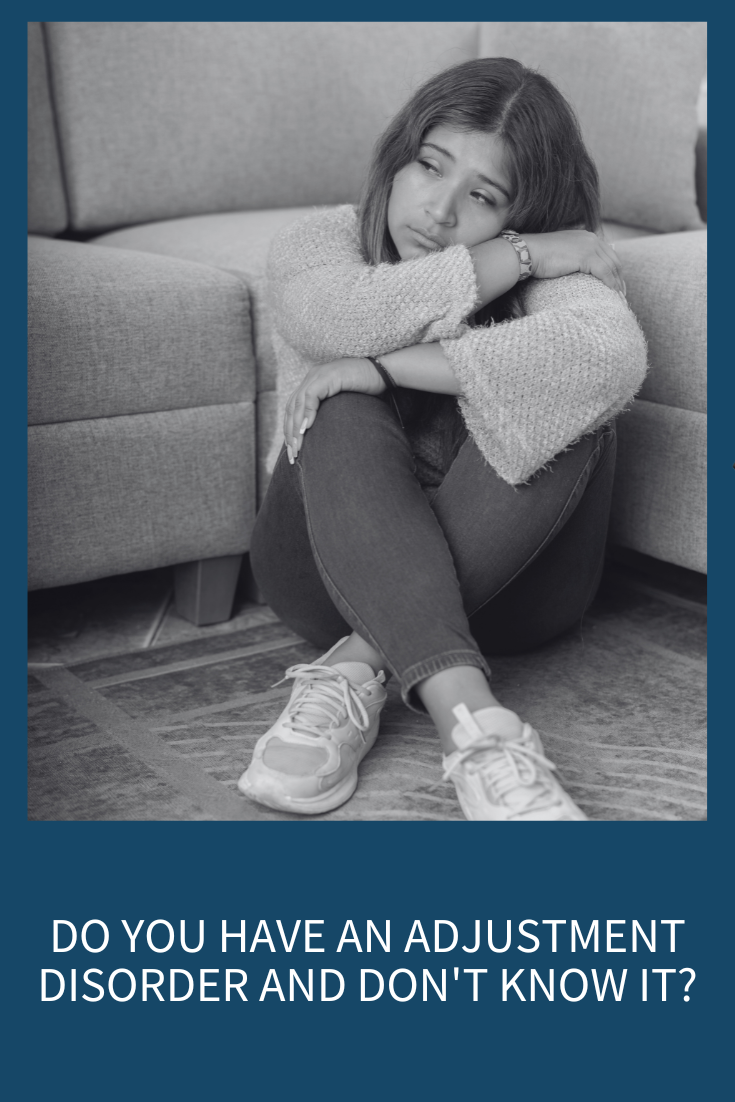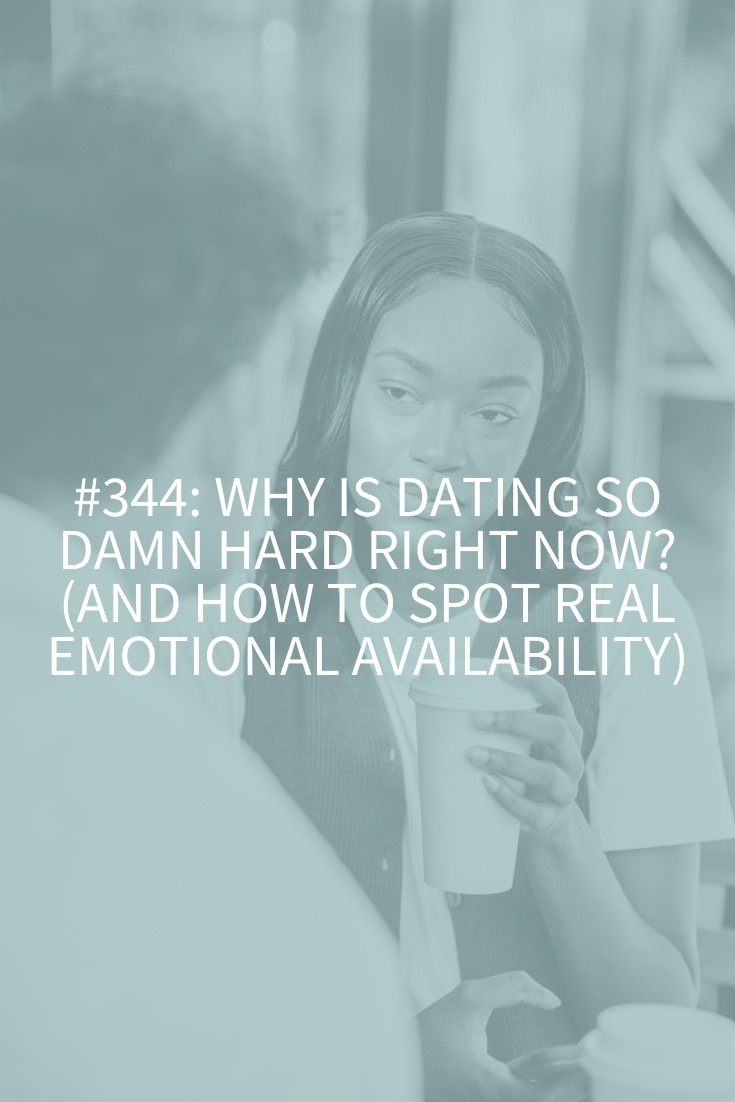
Adjustment disorders are basically having excessive reactions to some stress (or stressors) in your life that result in overly strong emotions, increased negative thinking and some sort of change in behavior. The key is that the reaction to this event is way more intense than would typically be expected. As you might imagine, this can cause a lot of problems in your relationships, work or school. Today I’ll teach you what adjustment disorders are, the signs you might have one, and how to treat them (including an amazing free tool you can download).
8-minute read
Shout out to Nicole who wrote in:
“Hi Abby, do you have podcast episodes that touch on adjustment disorders? I didn’t even know what they were until today and I think I might have one. I really appreciate your explanations of things and I’d love to learn more about adjustment disorders from you.”
First, a Warning
Before we start, I want to say very clearly that you should not diagnose yourself if at all possible! If you have access to mental health care, you should absolutely go see a professional and not rely on me or Google. I say this because so many mental health issues look like so many other mental health issues if you don’t know what you’re doing. We all go to school and get tons of training for a reason!
One of the most important parts of my job as a psychologist is something called differential diagnosis. Basically, this is the process of differentiating between two or more conditions which share similar signs or symptoms. And this is a very hard thing to do which is why people get misdiagnosed, even by professionals! I can’t tell you how many people have come to my office with something like a normal bereavement process after the death of a loved one and been diagnosed by themselves or friends with severe depression, bipolar disorder or even anxiety.
Having said all that, I do understand that many of my listeners and readers either don’t have access to good mental healthcare, want to understand your own suffering better or want more information to bring to your healthcare professional. So that’s what today is all about.
What is an Adjustment Disorder?
Adjustment disorders are basically having excessive reactions to some stress (or stressors) in your life that result in overly strong emotions, increased negative thinking and some sort of change in behavior. The key is that the reaction to this event is way more intense than would typically be expected. As you might imagine, this can cause a lot of problems in your relationships, work and school. We all go through stressful events in our lives: getting fired, divorced, or the death of a loved one, but with an adjustment disorder, you don’t adjust back to “normal” in a few weeks.
I’m going to get very nitty gritty with you now because this isn’t a 30-second soundbite. If you really want to understand adjustment disorders and think about whether this is you or not, you need to spend a minute learning and understanding how we diagnose. I’ve mentioned before on the podcast that we mental health professionals use something called the Diagnostic and Statistical Manual of Mental Disorders to diagnose mental health conditions. Currently, this book is in its fifth edition and was updated in 2022 with some text revisions, so it is now called the DSM-5-TR.
There’s a section in this book called Trauma and Stressor Related Disorders, which says that these types of disorders happen after an exposure to a traumatic or stressful event. There are five disorders listed in this chapter. They include reactive attachment disorder, disinhibited social engagement disorder, post-traumatic stress disorder (PTSD), acute stress disorder and adjustment disorders. So, right away, you can see that it might be easy to confuse adjustment disorders with other problems (hence us going deep for a moment).
There are diagnostic criteria that have to be met for a mental health professional to diagnose you with an adjustment disorder. These are:
- The development of emotional or behavioral symptoms in response to an identifiable stressor(s) occurring within three months of the onset of the stressor(s).
These symptoms or behaviors are clinically significant, as evidenced by one or more of the following:
- Marked distress that is out of proportion to the severity or intensity of the stressor, taking into account the external context and the cultural factors that might influence symptom severity and presentation.
- Significant impairment in social, occupational, or other important areas of functioning.
- The stress-related disturbance does not meet the criteria for another mental disorder and is not merely an exacerbation of a preexisting mental disorder.
- The symptoms do not represent normal bereavement.
- Once the stressor (or its consequences) has terminated, the symptoms do not persist for more than an additional six months.
There are six adjustment disorders listed in the DSM. These include:
- With depressed mood: Low mood, tearfulness, or feelings of hopelessness are predominant.
- With anxiety: Nervousness, worry, jitteriness, or separation anxiety is predominant.
- With mixed anxiety and depressed mood: A combination of depression and anxiety is predominant.
- With disturbance of conduct: Disturbance of conduct is predominant.
- With mixed disturbance of emotions and conduct: Both emotional symptoms (e.g., depression, anxiety) and a disturbance of conduct are predominant.
- Unspecified: For maladaptive reactions that are not classifiable as one of the specific subtypes of adjustment disorder.
What are Symptoms of Adjustment Disorders?
Remember that symptoms of an adjustment disorder start within three months of the stressful event. The symptoms you have will depend on which of the six types of adjustment disorders you might have, so it can be very different for different people. The common factor is that you experience more stress than would generally be expected in response to whatever the stressor is.
Some examples include:
- Impulsive behavior
- Feeling sad, hopeless, or not enjoying things you used to love
- Crying often or for “no reason”
- Feeling nervous, tense, anxious, worrying, or stressed out
- Feeling irritable or like you can’t handle anything
- Having trouble sleeping
- Loss of appetite
- Difficulty concentrating or focusing or figuring out how to help yourself
- Trouble getting through your day and the things you have to do (this could include not being able to work or go to school, not paying your bills, cleaning your home or personal hygiene)
- Withdrawing from family or friends
- Thinking about suicide or acting on those thoughts
Another thing to keep in mind is that your symptoms don’t last longer than six months after the stressful event. However, you could have a lasting adjustment disorder for more than six months if that stressful event is ongoing (such as still being unemployed after losing your job six months ago or still living with your spouse after you’ve decided to divorce).
What are the Causes or Triggers for Adjustment Disorder?
Everyone reacts in a different way to stressors in their lives. We all have different temperaments, learned emotional behaviors and genetics. So, the death of your mom might throw you into a tailspin while your brother seems fine.
Some typical events that I see in my practice that might then show up as an adjustment disorder include:
- Divorce, cheating, or major problems with a relationship
- Death of a loved one
- A major life change such as retirement, being fired/laid off, or moving
- Something physical like finding out you have a chronic illness, losing a pregnancy, learning your child has diabetes, or your partner having a heart attack
- Being unable to get pregnant easily
- Any unexpected catastrophes, such as a fire burning down your home
- Physical assault, violence of some kind, rape
If adjustment disorders don’t resolve, they can lead to even more serious mental health conditions such as suicidality, major depression, or drug or alcohol disorder.
What Else Could It Be?
I mentioned differential diagnoses earlier. Again, this is basically when we mental health professionals are presented with someone’s symptoms, and we have to decide what it is we’re looking at. The most common way to misdiagnose is to think something is an adjustment disorder when there’s actually a mood disorder (such as severe depression), a drug or alcohol disorder, an anxiety disorder, PTSD or a disruptive behavior disorder. So, the symptoms could be similar, but if you don’t identify the real cause of those symptoms, you’re going to focus on the wrong things, use ineffective treatment tools and the person won’t feel better.
How Do You Treat Adjustment Disorders?
Effective treatment for adjustment disorders will result in you returning to a similar (or even higher) level of functioning as you had before this big stressor hit your life.
The most common treatment includes:
- Some type of cognitive behavioral therapy (CBT). CBT is generally done individually or in groups and involves helping you recognize negative or unhelpful thoughts (and their subsequent feelings) and then learning how to change those thoughts. If you want to try this yourself, you can use this Rational Emotive Therapy (RET) tool.
- Medication to alleviate current symptoms. Some kind of anti-anxiety or anti-depression medication is often used along with some kind of talk therapy to help alleviate symptoms so you can think more clearly and use your tools.
If You’re Having Suicidal Thoughts
The risk of suicide can be higher in people who have adjustment disorders. If you’re thinking about suicide, and you have a mental health provider, contact them immediately. If they’re not available or you don’t currently have a provider, contact an emergency number or hotline right away:
- In the U.S., call or text 988 to reach the 988 Suicide & Crisis Lifeline. It’s available 24 hours a day, every day. Or use the Lifeline Chat. Services are free and private.
- S. veterans or service members who are in crisis can call 988 and then press “1” for the Veterans Crisis Line. Or text 838255. Or chat online.
- The Suicide & Crisis Lifeline in the U.S. has a Spanish-language phone line at 1-888-628-9454(toll-free).
Research and Resources for Do You Have an Adjustment Disorder and Don’t Know It?
Diagnostic and Statistical Manual of Mental Disorders, Text Revision Dsm-5-tr






